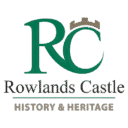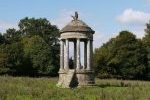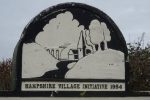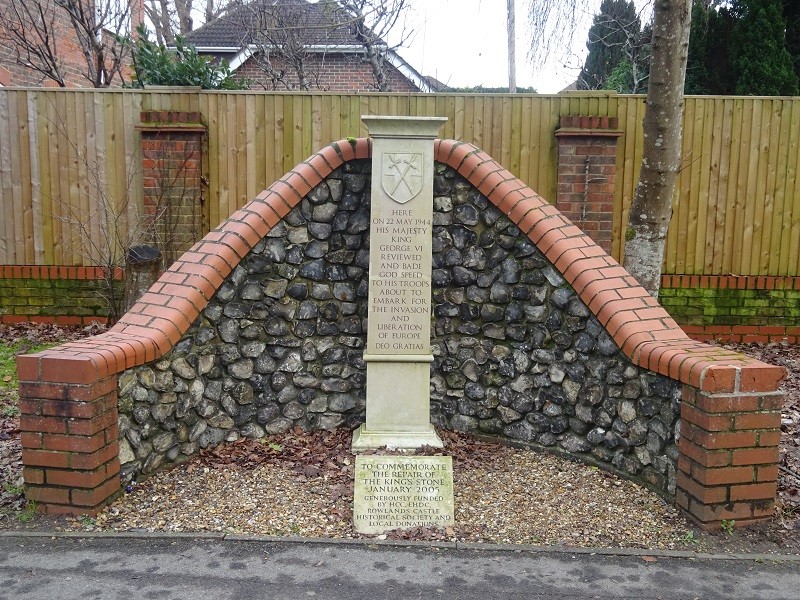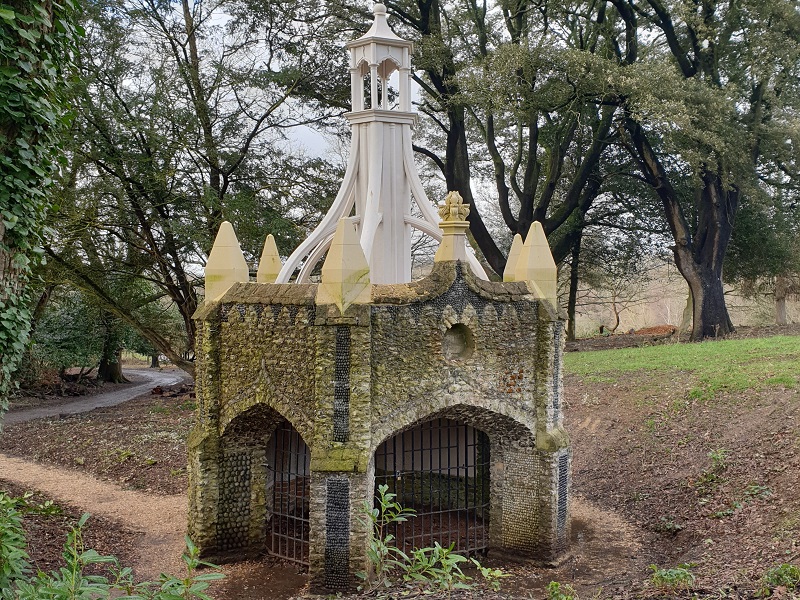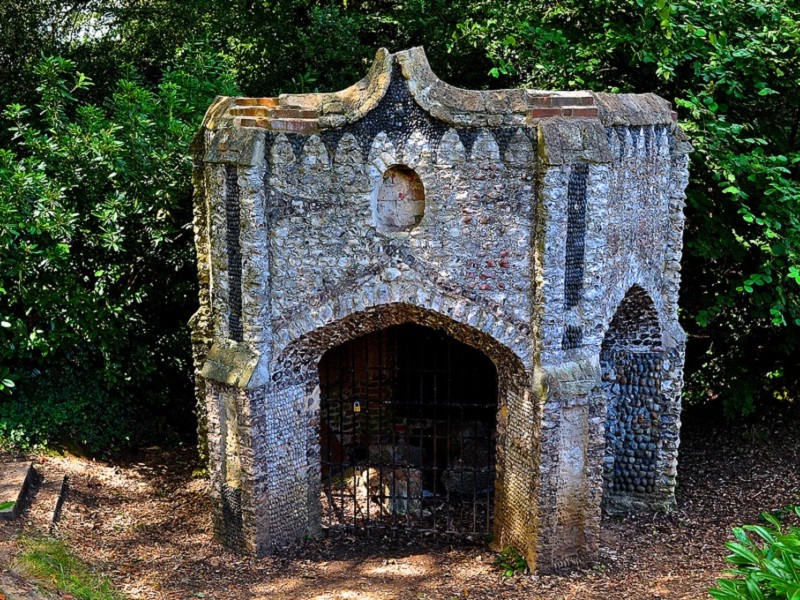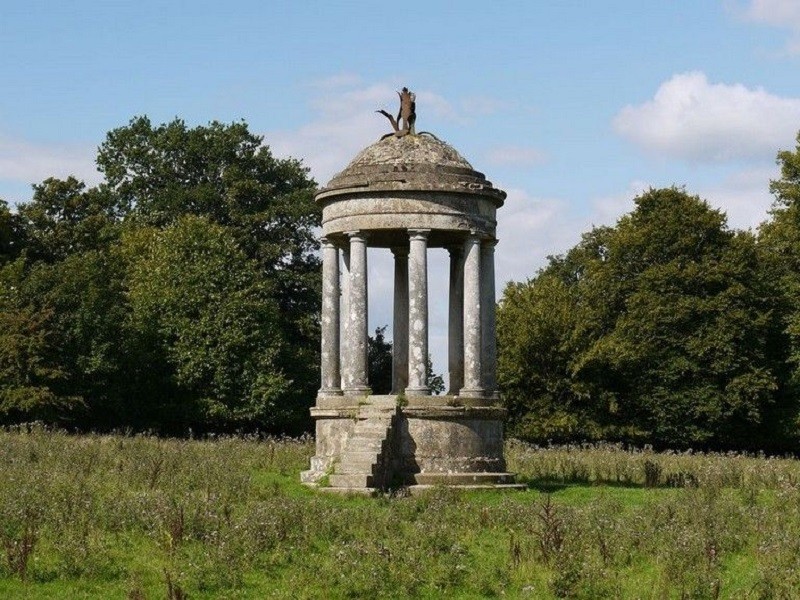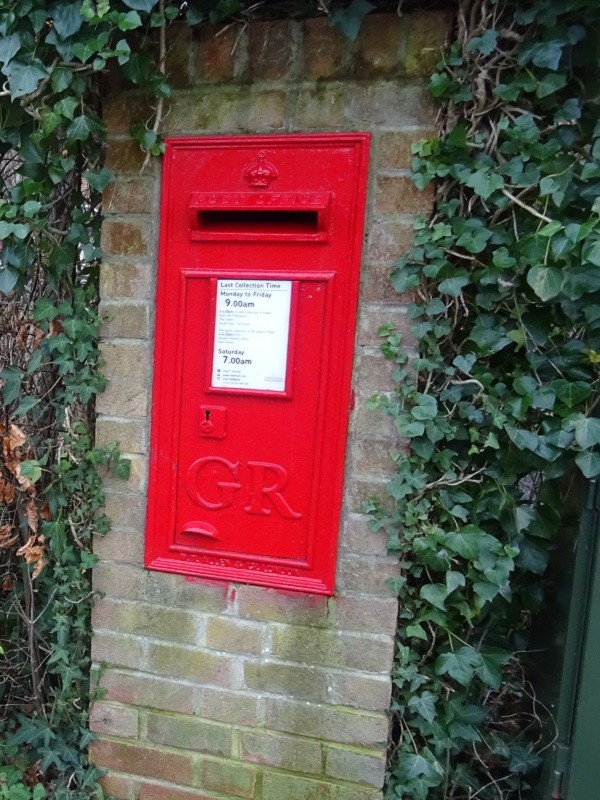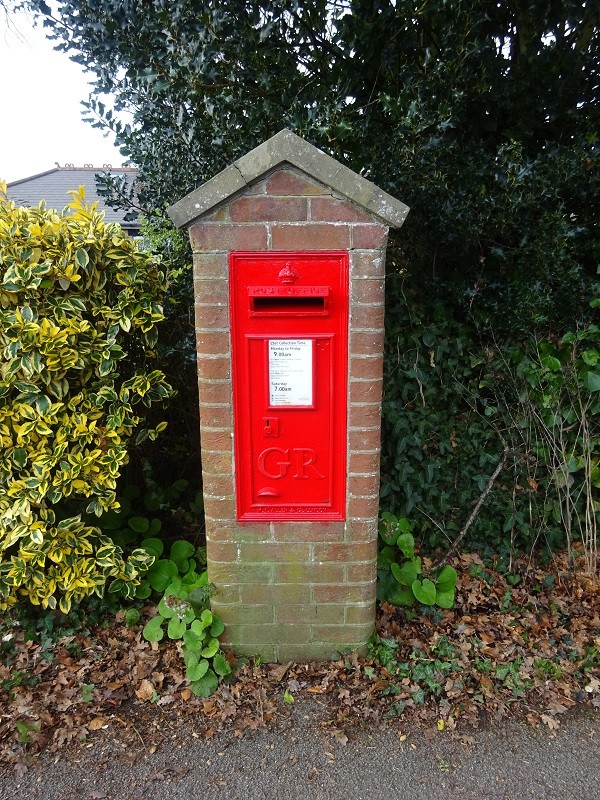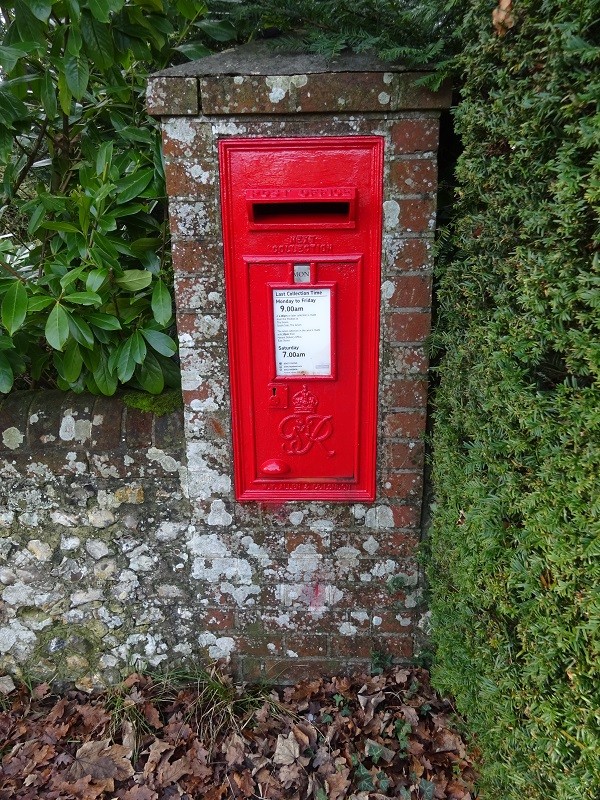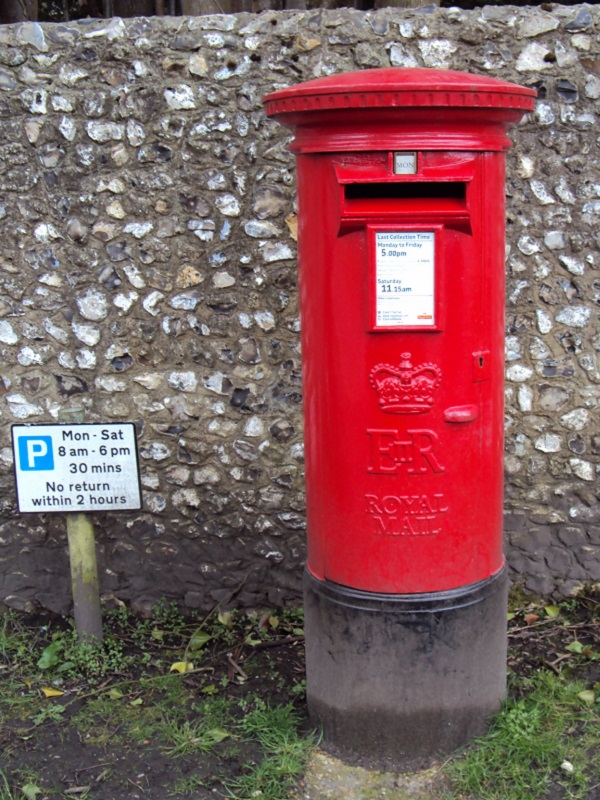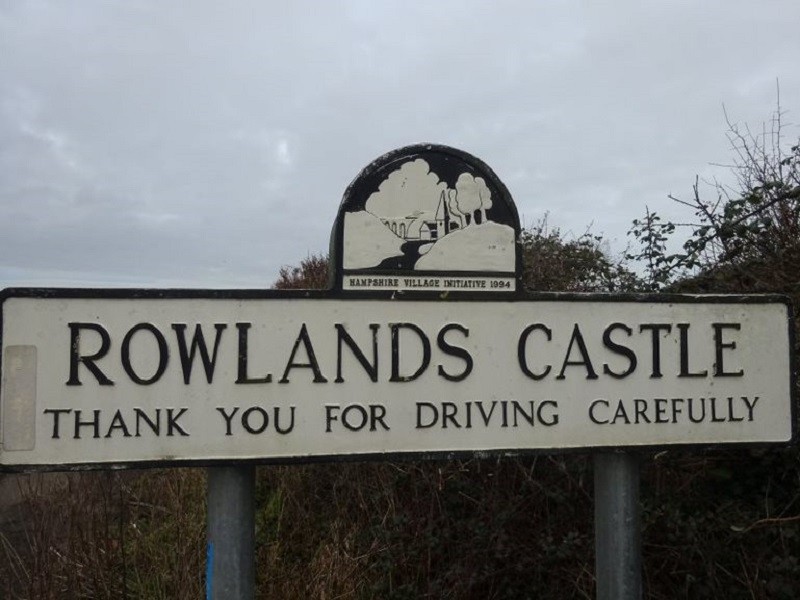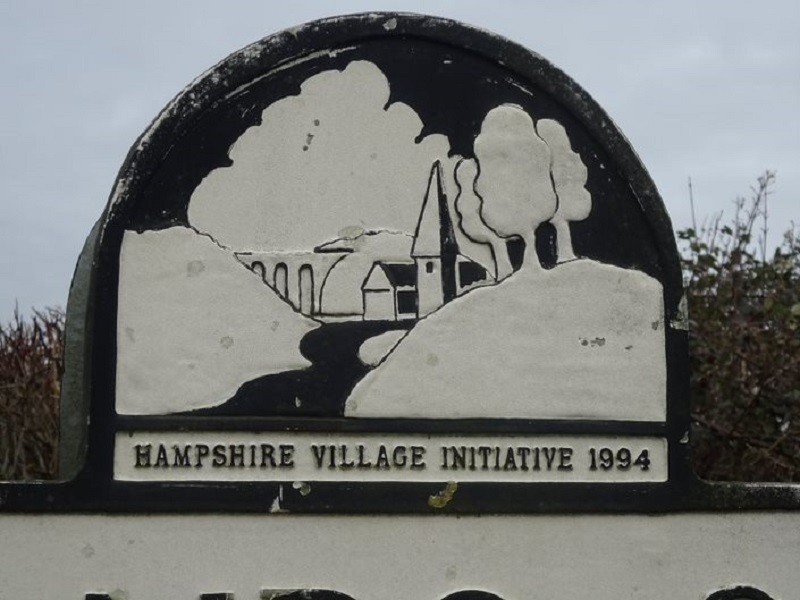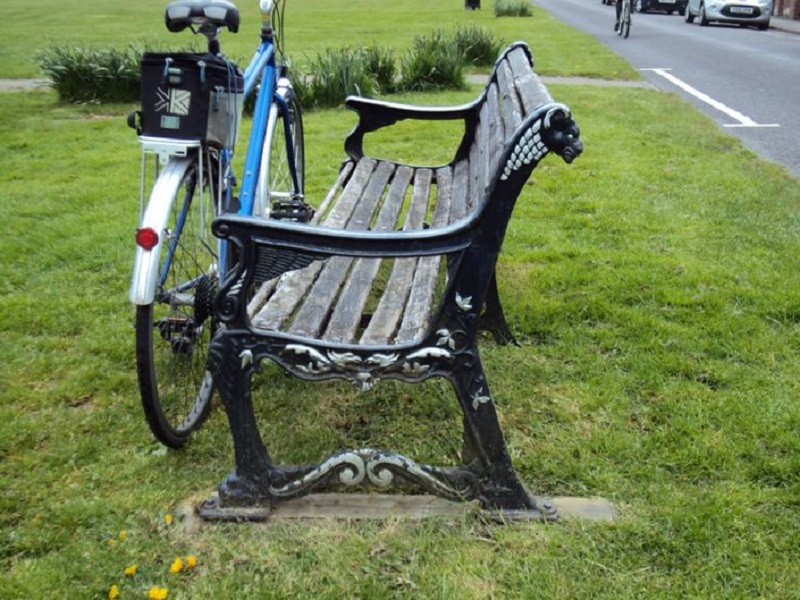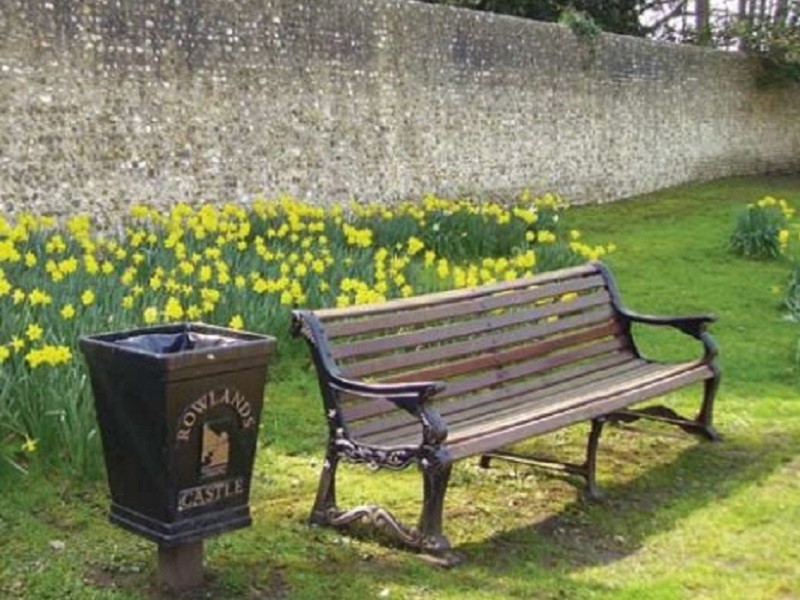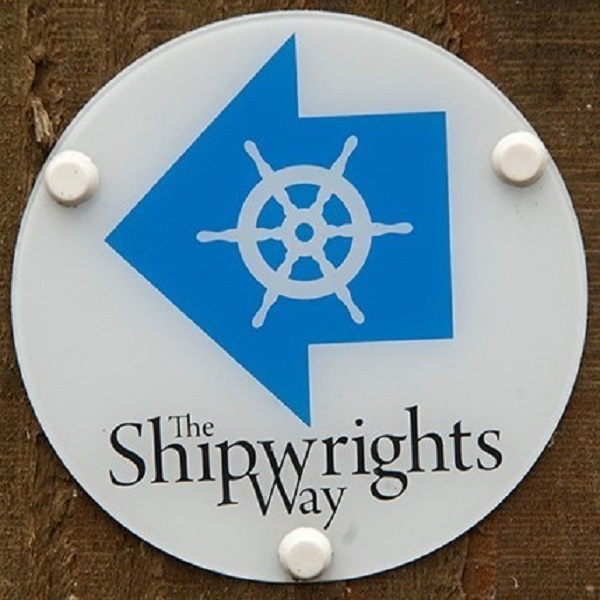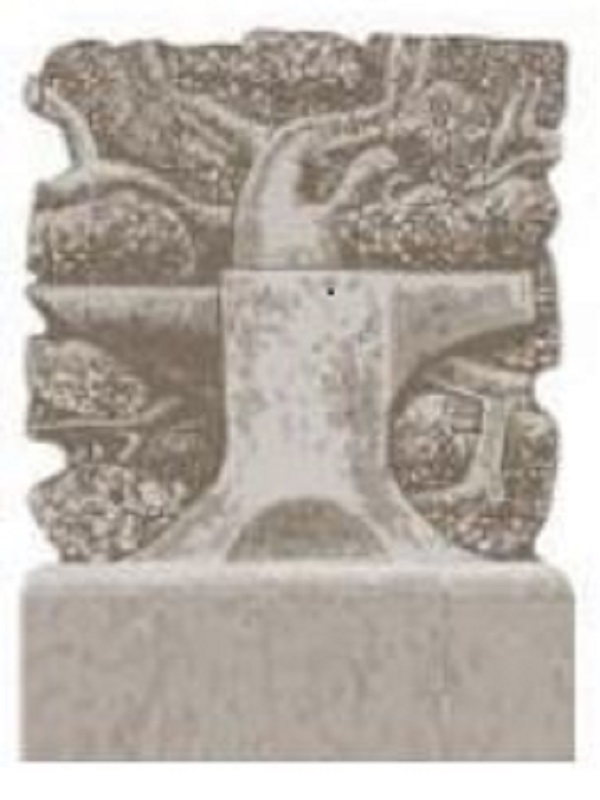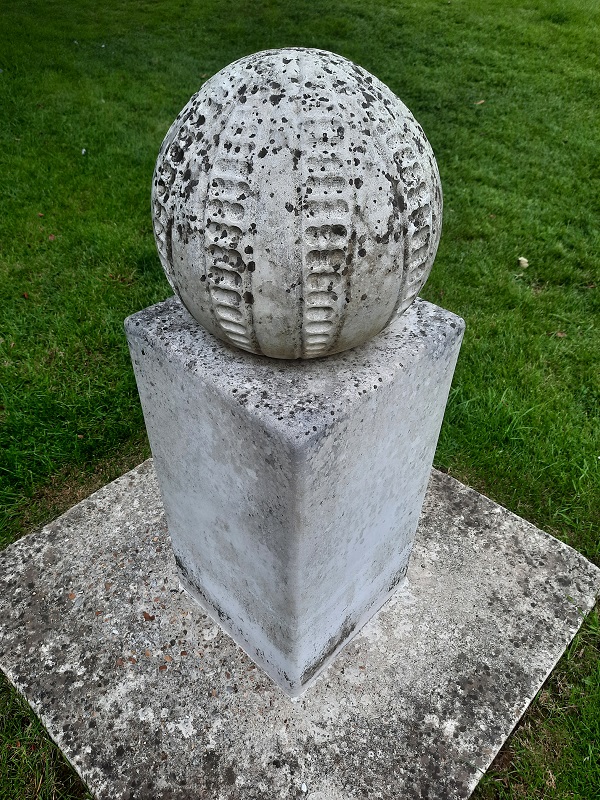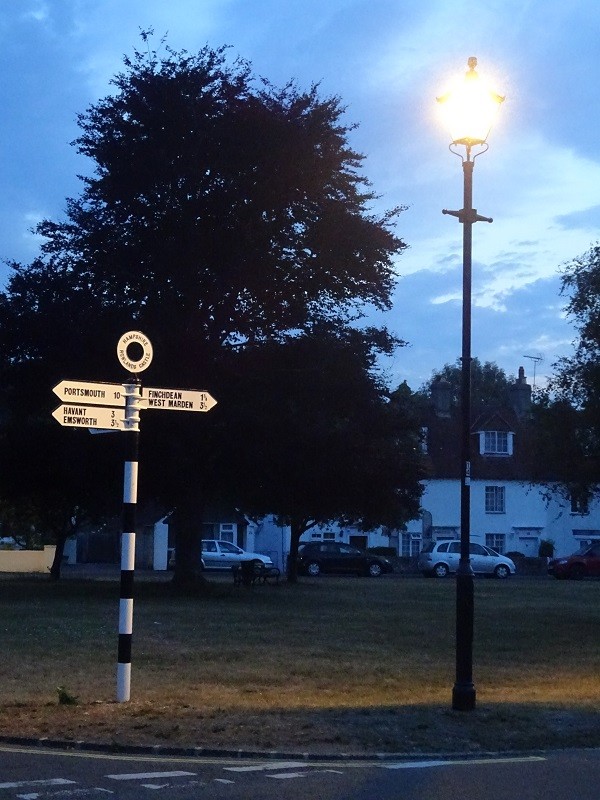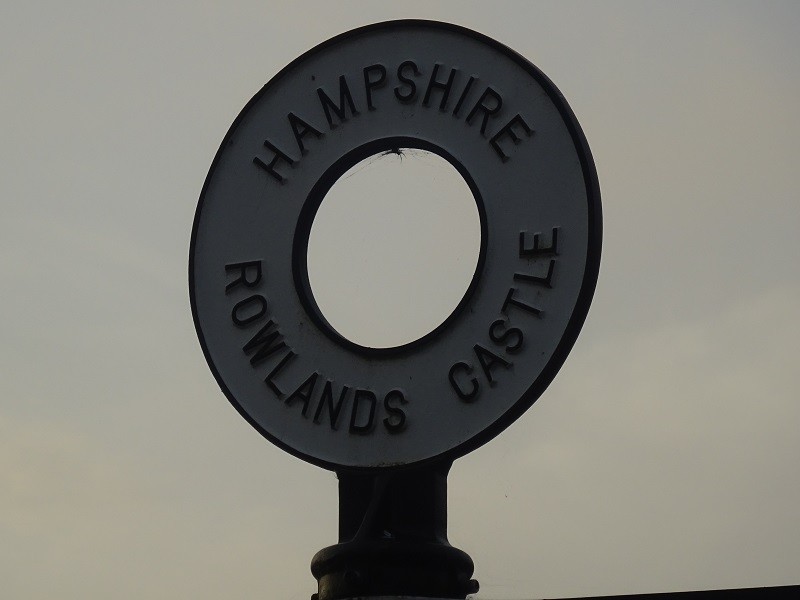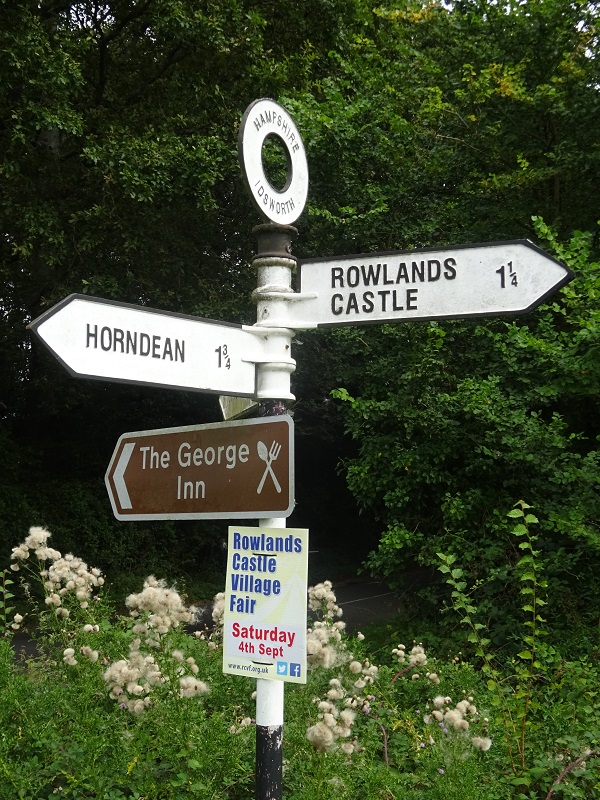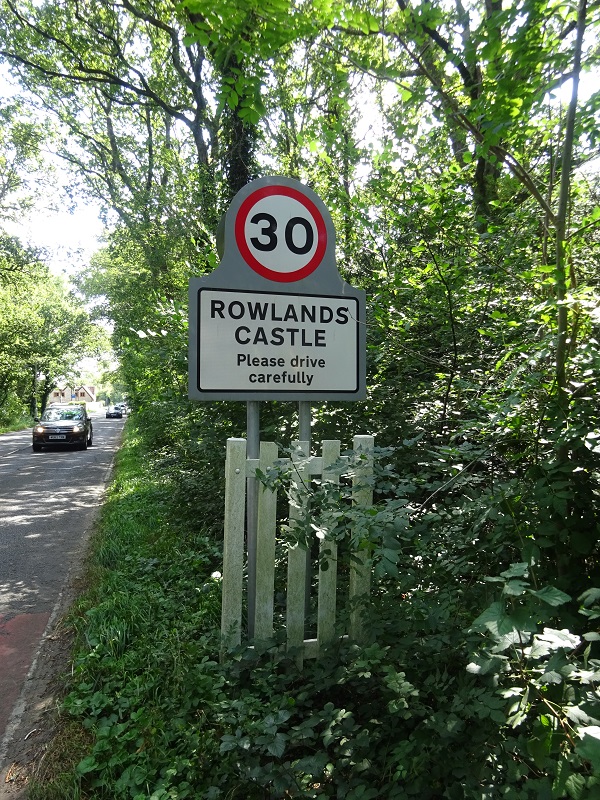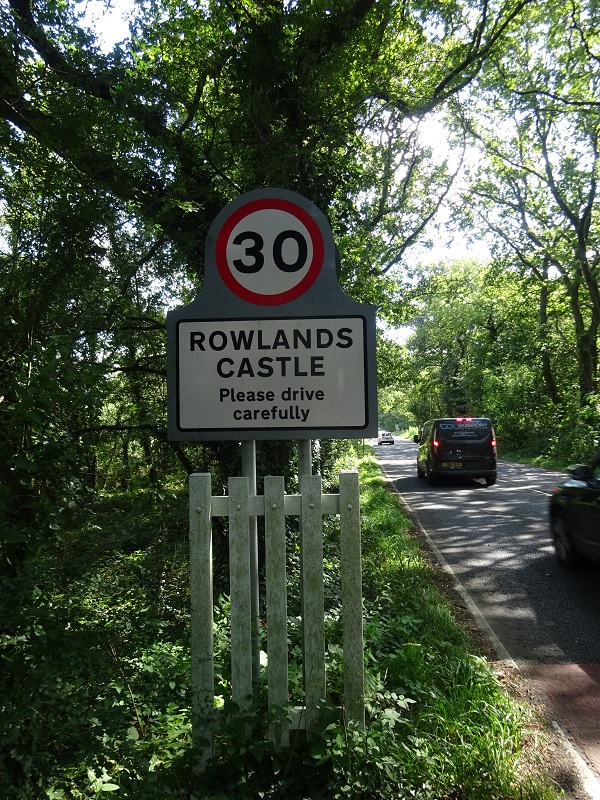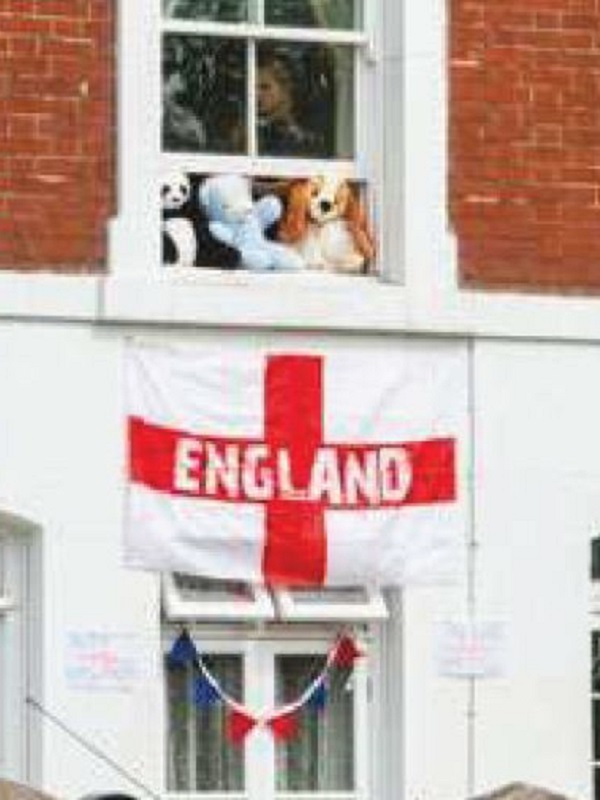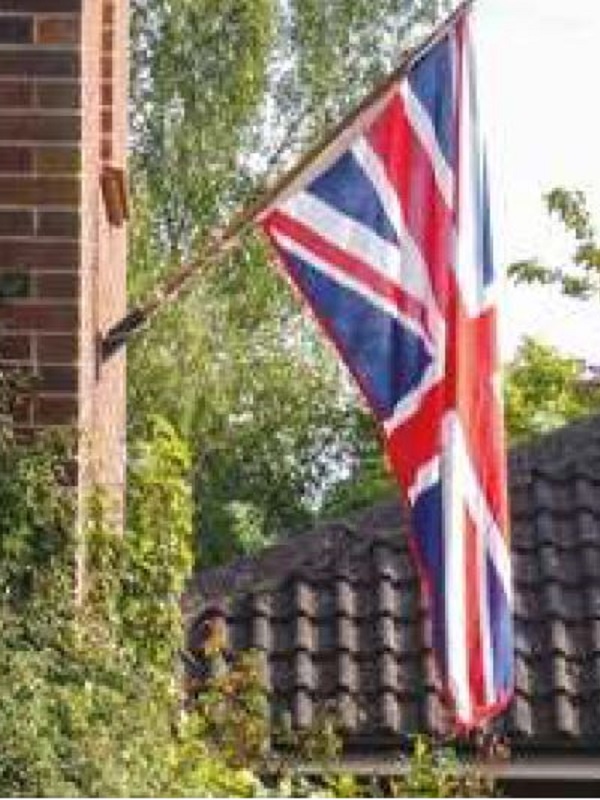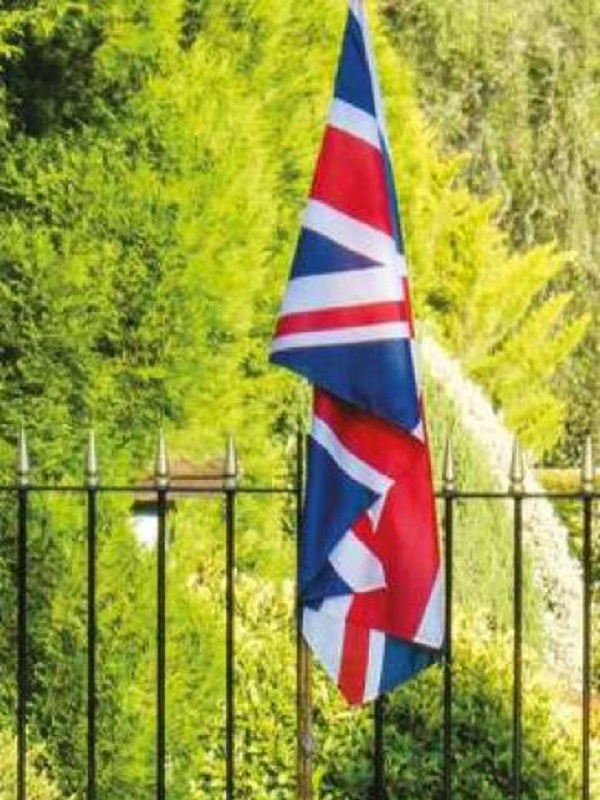Memorials & Follies
War Memorials
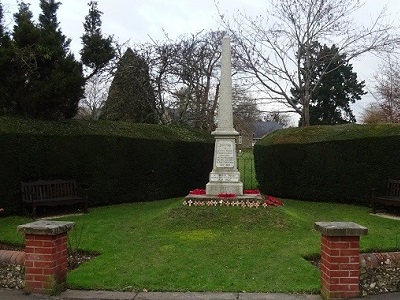
Village War Memorial, Redhill Road by St John’s Church
The aftermath of World War 1 saw the biggest ever surge of public commemoration, with tens of thousands of memorials built across England, commemorating the loss of three quarters of a million British lives. The official policy of not repatriating the dead meant that the memorials provided the main focus for the grief felt by families of those who had died.

Admiral Michael Pelham O’Callaghan
The memorial for Rowlands Castle was built by Mr Wilkin for £245. It is a granite memorial, surrounded by a dwarf wall, and was originally surrounded by wrought iron railings, until these were removed during the Second World War. It was unveiled at a service of dedication on 2nd November 1919 by retired Admiral Michael Pelham O’Callaghan, who lived at Deerleap House.

James MacArthur(1848-1922), Bishop of Southampton, NPG x20185
The service was a village affair with the Reverend Hern of the Congregational Church on the Green reading the lesson and Admiral O’Callaghan reading the names of the fallen from the village. The dedication ‘In sacred trust to the neighbourhood, to be cared for and cherished for all time’ was made by Suffragan Bishop of Southampton Rt Rev James Macarthur (Bishop of Bombay 1898 – 1903).

The inscriptions on the memorial read ‘Erected in grateful memory of the men of this district whose names are inscribed hereon who gave their lives in the Great War 1914-1919’ and ‘Greater love hath no man than this that he lay down his life for his friends’.
After World War II, an additional inscription was made: ‘In grateful memory, the names are added of those who gave their lives 1939-1945’. There is more information about the military personnel who are remembered on the memorial under Local Military History.
The King’s Stone
Due to the presence of troops in Rowland’s Castle during World War II, King George VI, as part of his major tour-de-force inspection in the Portsmouth area, reviewed and took the salute from a number of troops in Manor Lodge Road, which has subsequently been celebrated by the modest monument called the King’s Stone.
There is a shield on the stone monument above the inscription ‘Here on 22nd May 1944 His Majesty King George VI reviewed and bade God speed to his troops, about to embark for the invasion and liberation of Europe – Deo Gratias’.
In January 2005, repairs were carried out on the stone, a wall built to frame it. A plaque was added in front of the stone, commemorating the repair, which was funded by Hampshire County Council, East Hants District Council, Rowlands Castle Historical Society and local donations.
Follies
The Shell House was built in 1828 and is covered in shells from Hayling Island. The house is hexagonal in shape and was based on the design of the Chichester Cross. By 1836 George Staunton was using the Shell House as a museum of curiosities for such items as a stuffed crocodile and examples of Roman pottery. This structure is a Grade II* listed building and it now holds a number of plaques commemorating Staunton’s ancestors. As part of renovation works funded by the Lottery Fund, the Shell House was restored to its former glory in 2020. The photos above show it before and after restoration. Post-restoration photo by Teresa Benger.
The beacon is a folly built in 1830 in the style of an ionic temple to a design by Lewis Vulliamy. It was largely built with material from the demolished Purbrook House. The roof is domed and supported by eight Doric columns. The roof has a hole designed to allow a flagpole to be placed there. It is believed that a Union Flag was hoisted on top of the Beacon to signal to Staunton when the lord of the manor was in residence.
Post Boxes
It was in 1849 when the British Post Office first encouraged people to install a letter box to facilitate the delivery of mail. Before then, letterboxes of a similar design had been installed in the doors and walls of post offices for people to drop off outgoing mail. Examples of such a wall box are those pictured above in Redhill Road, Finchdean Road and Links Lane, respectively. These older wall boxes are inscribed with the monarch of the time, George V (1910 – 1936) and George VI (1936 – 1952).
Free-standing pillar boxes (such as the one shown on The Green) have been in use since 1852, just twelve years after the introduction of the first adhesive postage stamps (Penny Black) and uniform penny post. According to the Letter Box Study Group, there are more than 150 recognised designs and varieties of pillar boxes and wall boxes, not all of which have known surviving examples. The red post box is regarded as a British cultural icon. Royal Mail estimates there are over 100,000 post boxes in the United Kingdom.
Hampshire Villages Initiative
In 1994, as part of Hampshire County Council’s Hampshire Villages Initiative (HVI), Rowlands Castle was provided with funds to enhance the village gateway name signage and to provide some cast iron seats and bins on The Green. The HVI sought to add value by working in partnership with those communities which would benefit by having additional funds to ensure that their proposed improvements would reflect the unique sense of place of Hampshire’s villages.
Icons – Shipwright’s Way
The Shipwright’s Way runs from Alice Holt Forest near Farnham in the north of Hampshire down to Portsmouth’s Historic Dockyard, via the Hayling Island ferry. On its way, it passes through Finchdean and Rowlands Castle. This was the route by which trees from the Alice Holt Forest were transported for use in the dockyard for shipbuilding.
There are twenty sculptures along the route of Shipwrights Way, each depicting a story or aspect of the area where they stand. The subjects were suggested by local people and then carved from creamy Portland stone by artist Richard Perry.
The Finchdean sculpture alludes to the ‘Binding Tree’, a large elm which stood on the green outside the smithy and reputedly hung with the blacksmith’s tools and patterns he used to bend wheel rims into shape. The sculpture was inspired by drawings from the Rowlands Castle Brownies.
Rowlands Castle has a flint cast of a sea urchin, known as a Shepherd’s Crown, named because the five rays converging on the apex resemble the ribs of a crown. They were often found by shepherds caring for their flock on the chalk down lands.
Website: Shipwright’s Way.
Icons – Finger Posts
Legislation was enacted in England as far back as 1697, which enabled magistrates to place direction posts at cross-highways. Mandatory standards (The Traffic Signs (Size, Colour and Type) Provisional Regulations) were passed for Great Britain in 1933 which required poles to be painted with black and white bands and lettering to be of a different typeface. However, during World War II, signposts were removed from across much of the UK, lest enemy forces use them for navigation, and were replaced in the late 1940s.
Road signing was next comprehensively reviewed in the UK from 1961 by the government appointed Worboys Committee and the 1964 Traffic Signs Regulations brought in the signing system largely remaining in force today. Whilst the 1964 regulations did encourage local authorities to remove and replace traditional fingerposts with the new designs, it was not made compulsory to do so, which is why we are lucky to still have those signs in our villages. One interesting factor in the new design was that it did not allow for mileages of over three miles to be expressed with the use of halves and quarters. Therefore, those new fingerposts were required to round the previously more accurate distance measurements.
Whilst some elements of fingerpost design were prescribed during the period when their introduction became most widespread, there was plenty of scope for distinctive spread of designs which remains to today. Fingerpost survival is highest in rural areas and away from major roads. Reacting to concern about the loss of historic fingerposts from the rural landscape, an advisory leaflet was issued by the Department for Transport and English Heritage in June 2005, which stated that “All surviving traditional fingerpost direction signs should be retained in-situ and maintained on a regular basis. They should be repainted every five years in traditional black and white livery. Other colours should be used only when these are known to have been in use before 1940”.
The inclusion of the highway authority name took the form of raised or recessed lettering written down the poles or as part of a finial or roundel (when the centre is hollow, called an annulus) design (as seen in the photo of the Rowland’s Castle sign above).
Icons – Village Entry Signs
The oldest sign above shows the village name with Hampshire Village Initiatives logo. Subsequent signs have been attached to speed limit signs in an attempt to slow down the traffic coming into the village, particularly on Manor Lodge Road, which is part of the B2149 between Horndean and Havant, and Whichers Gate Road, which is part of the B2148 from Emsworth – both busy thoroughfares.
More recently, new signs have been erected featuring a gate.
Icons – Flying the Flag
Although many villagers fly flags on their own poles for various occasions, a flag will always be raised on the flagpole on the village green for all important occasions and memorials. The Rowlands Castle Association appoints a Flag Master.
